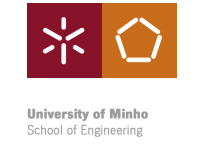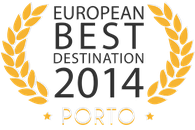ICEE Conference
- Home
- Book of Proceedings
- Submissions
- Programme
- Organizing Commitee
- Important dates
- Registration
- Scientific Commitee
- Keynote Speakers
- Academic Journals
- Malpractice and Ethic
- Press
- Venue & Accommodation
- Oporto and its Region






Oporto and its Region
Country/Nation
Portugal is the most westerly country in continental Europe. Its national borders, the oldest in Europe, were established during the second half of the 13th century. Five centuries ago, the Portuguese started globalization. The main heritage of the process of maritime expansion is the cultural link with 7 Portuguese-speaking countries, which account for over 230 million people, thus ranking Portuguese as the fourth most spoken European language and sixth as the most spoken language on the planet.
City/Region
Porto is the second largest town of Portugal and one of the most ancient European cities. One of the most significant aspects of Porto is its landscape, combining harmony with the urban structure and presenting a frame of rare beauty. The city was classified as World Heritage by UNESCO in 1996. When discovering Porto, you will find many surprises. Besides its welcoming and conservative environment, Porto is also contemporany and artistic. This is shown not only in the streets, architecture, monuments and museums but also in the terraces, restaurants and leisure and shopping areas. The town has about 300.000 inhabitants but it is the centre of an urban agglomeration with more than 1,2 millions of persons. It is one of the most important Portuguese cities in what concerns economic activity and a gateway to explore the beautiful Northern region of Portugal. People of Porto are known as being friendly and welcoming as well as dedicated to their traditions and community. The richness of its monumental and artistic patrimony, the Port Wine cellars, the many spots dedicated to leisure and culture are only some of the reasons that invite you to visit Porto.
In 2014, Porto was considered the European Best Destination.

 |
 |
 |
 |
How to get to Porto
Located in the North of Portugal, Porto is quite easy to get to, either by plane or by land.
You can get to Porto by plane from almost anywhere in the world, either directly or by means of other connections. The Porto airport, called Aeroporto Internacional Francisco Sá Carneiro- OPO (+351 22 943 24 00), is located about 11 km north of the city centre.
City Transports
The main means of transport in the city is the underground (Metro do Porto) and the bus (STCP).
A bus ticket to travel within the city costs 2.10 EUR (two trips). There is also a daily ticket (which is valid until midnight on the day it is used for the first time), which costs 7.00 EUR, and a 3-day ticket, which costs 15.00 EUR. Both tickets are valid for an unlimited number of trips in the partner companies, including STCP, Metro do Porto and CP (within the city area).
To travel in Metro do Porto an appropriate ticket is required: the "Andante", which costs 0,50 EUR, and can be recharged with trips.
There are two regular STCP bus services at the airport (line 601 and line 604), which can take you from the airport to the city centre. In this case the ticket costs 3.15 EUR and can only be used for two trips.

Travelling from the airport to the city centre by taxi costs an average of 20.00/25.00 EUR. Luggage over 55x36x20cm implies it has to be carried in the boot - therefore an additional can be charged. Transportation of cradles, baby carriages and wheelchairs is free of charge. Tips are up to the customer's decision, but they are not compulsory. Prices charged per trip are the same, regardless of carrying 1, 2, 3 or 4 passengers.
Rent-a-car
There are several rent-a-car services at the airport. To rent one of these cars, you just have to go to the respective rent-a-car counter or contact your travel agency in advance.
Travel to Porto by Land
You can also get to Porto by bus, by train or by car. New roads allow an easier access to the main cities in the country. There are 3 motorways leaving from Porto: to Lisbon (A1); to Minho (A3); and to Trás-os-Montes (A4). There is also a motorway connecting Porto to Valença (IC1/A28). A vast network of buses connects Porto to several other European cities. The main bus companies are Rede Nacional de Expressos, and InterNorte, in Praça da Galiza (+351 22 605 24 20) - this company has bus connections to most European capitals, through connections to Paris. There are also several other bus companies connecting Porto to the North (Rua Alfredo Magalhães), to the South (Rua Alexandre Herculano) and to many other destinations (Campo 24 de Agosto, in Central Shopping).
Railway Transports
You can also get to Porto by train from about anywhere in Europe, with CP, which has connection mainly to Paris. Porto has 2 main railway stations: Estação de Campanhã (which provides international connections and connections to Lisbon, Douro and Minho); Estação de S. Bento (which provides connections to Galicia, Douro and Minho, as well as to Aveiro and Coimbra). CP has a Call Center for reservations: 808 208 208 (or +351 223 394 040).
It's great to live in Porto...
Coming to Porto means living an extraordinary experience: the nice morning mist of a walk by the river on sunny days, which provides the city with a unique blue tone; a pleasant lunch in Praça da Ribeira, by the cube and the pigeons; a fantastic afternoon thanks to a walk by the historical area classified as world heritage and a nice time in the city parks; a drink in Foz by the sunset; a dinner in one of the many traditional city restaurants; and in the evening, hopping form bar to bar until you feel tired or ending the night in one of the city discos...
Although it is known as the "city of work" and for the quality of its University, Porto also has leisure times, thus increasing quality of life in the city.
Therefore, those who come to Porto once will wish to get back later...
 |
 |
Some useful links about Porto:
Porto (The New York Times -Travel)
Porto Map
Weather (Porto, Portugal)
Casa da Musica
Casa de Serralves
City Council
Official Tourism Office
